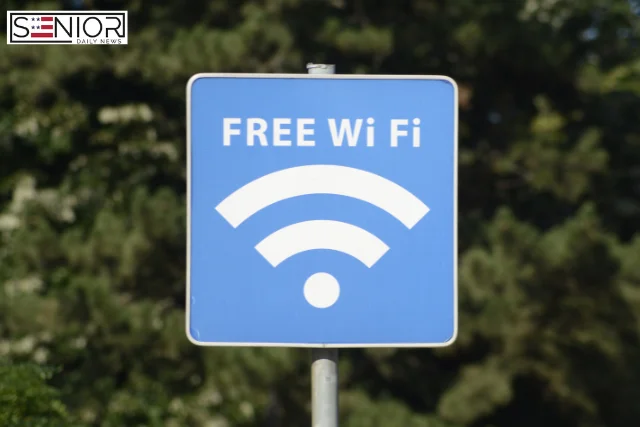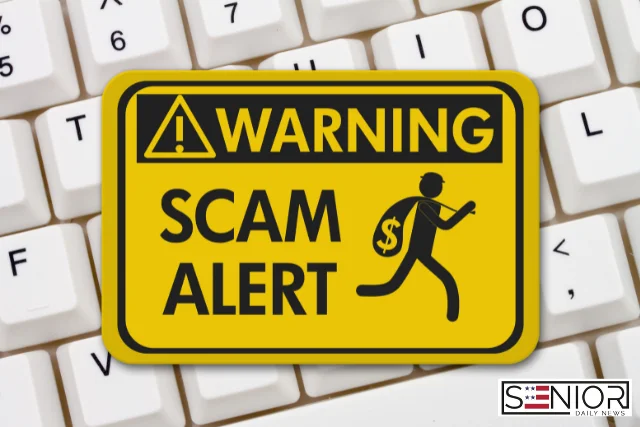Public WiFi Security: Why It’s Riskier Than You Think

In today’s digital world, it’s tempting to connect to a free public WiFi hotspot when you’re out and about—at your favorite café, library, hotel, or airport. After all, who doesn’t love free internet?
But before you click “Connect,” it’s worth pausing for a moment.
Using public WiFi may seem harmless, but it comes with real risks—especially when it comes to your personal information, privacy, and security. This article will help you understand why public WiFi is more dangerous than most people think and how you can protect yourself if you must use it.
Whether you’re 60 or 90, tech-savvy or just learning the ropes, this guide is for you.
What Is Public WiFi?
Public WiFi, also known as an “online free hotspot,” is a wireless network that anyone can access without a password or with a commonly shared one. These networks are typically found in:
- Coffee shops like Starbucks
- Airports and bus terminals
- Hotels and resorts
- Libraries
- Hospitals and clinics
- Retail stores and malls
While convenient, these open networks often lack the safety features found in private home or workplace internet connections. That’s what makes them risky.
The Real Dangers of Public WiFi
Let’s break down the top risks associated with public WiFi security.
1. Man-in-the-Middle (MitM) Attacks
Imagine you’re talking to a friend on the phone, but someone secretly taps into the call and listens to everything. That’s basically what a MitM attack is.
When you’re on public WiFi, cybercriminals can intercept data traveling between your device and the internet. This means they could see:
- Passwords you type
- Websites you visit
- Emails you send
- Credit card numbers you enter
Scary, right?
2. Fake Hotspots (Evil Twins)
Hackers often set up fake public WiFi networks with names that look legit, like “Free_Airport_WiFi” or “Starbucks_WiFi_Guest.” If you connect to one of these imposters, you’re giving the hacker direct access to your device and data.
They can then:
- Steal your login credentials
- Install malware on your device
- Spy on your online activity
3. Unencrypted Connections
Secure websites use encryption to protect your data (you’ll see “https” instead of “http” in the address bar). But if you visit a non-secure site while on public WiFi, your information can be exposed.
Even worse, some public WiFi networks don’t encrypt the connection at all—leaving everything you do open to prying eyes.
4. Malware and Viruses
Some attackers inject malware into your device once you connect to an unsafe network. This malicious software can:
- Record your keystrokes
- Monitor your browsing habits
- Access files and photos
- Lock your device until you pay a ransom
This is especially dangerous if you use a laptop or tablet on public WiFi.
5. Automatic Device Connections
Most devices are set to connect automatically to known WiFi networks. If you’ve previously connected to “Hotel_WiFi” or “Cafe_Guest,” your phone or laptop might automatically reconnect to any network using the same name—even if it’s a malicious copy.
That’s a backdoor hackers love to exploit.
Why Seniors Are More Vulnerable
Older adults are increasingly using smartphones, tablets, and laptops to stay connected, shop online, and manage finances. That’s a great thing!
However, seniors may:
- Be more trusting of public networks
- Use simple or repeated passwords
- Forget to update their devices
- Be unfamiliar with security features
These habits can unintentionally make you an easier target for cybercriminals.
How to Stay Safe on Public WiFi
Fortunately, you can take steps to protect yourself. Here’s a practical checklist.
1. Avoid Using Public WiFi for Sensitive Tasks
Never check your bank account, enter credit card info, or log into medical portals on public WiFi. Save these tasks for when you’re at home or using a secure network.
2. Use a VPN (Virtual Private Network)
A VPN is like a secure tunnel that hides your internet activity from hackers. Even if someone intercepts your data, they won’t be able to read it.
There are many VPN apps for phones, tablets, and laptops. Look for one with good reviews, easy setup, and strong encryption.
Popular options include:
- NordVPN
- ExpressVPN
- ProtonVPN (offers a free version)
3. Turn Off Automatic Connections
Go into your device’s settings and disable auto-connect to WiFi. This gives you more control and helps avoid connecting to rogue networks.
4. Always Check for HTTPS
Before entering personal info on a website, make sure the URL starts with “https://”. The “s” stands for secure.
Many browsers also display a padlock icon to show the site is encrypted.
5. Use Two-Factor Authentication (2FA)
Enable 2FA on your email, banking, and social media accounts. This adds an extra layer of protection—even if someone gets your password, they’ll need a second verification step (like a text code).
6. Update Your Devices Regularly
Software updates often include important security fixes. Keep your phone, tablet, or laptop up to date.
Also, install antivirus software and keep it updated too.
7. Use Mobile Data Instead
If you need to access sensitive information while out, consider using your phone’s cellular data instead of public WiFi. It’s often more secure.
8. Forget the Network When You’re Done
After using a public network, go into your device’s settings and “forget” the connection. This helps prevent automatic reconnection later on.
9. Don’t Share Files on Public Networks
Turn off file sharing, Bluetooth, and AirDrop when on a public network. These features are convenient but can be exploited.
What About Password-Protected Public WiFi?
Even if a network has a password (like in a hotel or café), it’s still shared with dozens—or hundreds—of people. That makes it only slightly safer than an open network.
Assume that others on the same network could try to snoop on your data. Follow the same precautions.
Tips for Safer Browsing While Traveling
Traveling often means relying on hotel WiFi, airport hotspots, and unfamiliar networks. Here’s how to stay safer on the go:
- Bring a portable WiFi hotspot: These small devices use cellular networks to create a personal, secure hotspot.
- Invest in a travel VPN: Some VPNs are designed specifically for travelers and work across multiple countries.
- Log out of accounts after use: Always sign out of email, banking, and shopping accounts when you’re done.
- Back up your data: Just in case something goes wrong, have a backup of your important files, contacts, and photos.
Warning Signs You’ve Been Hacked
If you’ve used public WiFi and notice any of these red flags, act quickly:
- Unexpected account logins or password change alerts
- Strange charges on your credit card
- Emails sent from your account that you didn’t write
- Your device is slower than usual or behaving oddly
- You get locked out of accounts
What to do:
- Change your passwords immediately.
- Run a virus/malware scan.
- Contact your bank or credit card company.
- Enable two-factor authentication.
- Consult a professional if you’re unsure.
FAQs About Public WiFi Security
Q: Is it ever safe to use public WiFi?
Yes—but only if you’re taking proper precautions like using a VPN, avoiding sensitive tasks, and being mindful of network names.
Q: Can hackers see everything I do on public WiFi?
Without protection, they can potentially see your browsing activity, login credentials, and more. Using encryption and security tools helps prevent this.
Q: Is it better to use mobile data than public WiFi?
Yes. Mobile networks are generally more secure than open WiFi connections.
Q: Are hotel and airport WiFi networks safe?
They are safer than completely open networks but still shared and vulnerable. Treat them with caution.
Q: Do iPhones and Androids protect against WiFi risks automatically?
They include some protections, but you still need to take active steps—like disabling auto-connect, using a VPN, and updating your device regularly.
Image Source: Canva






